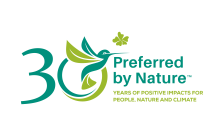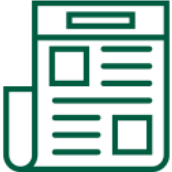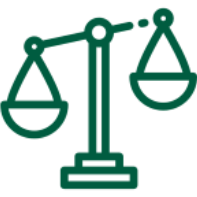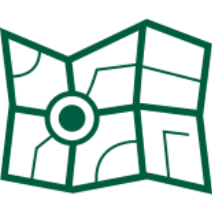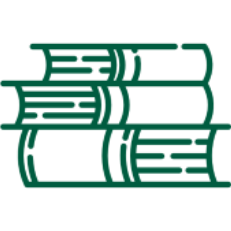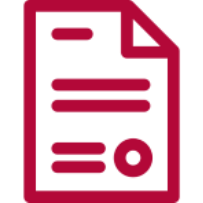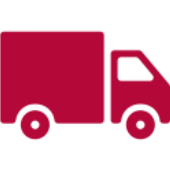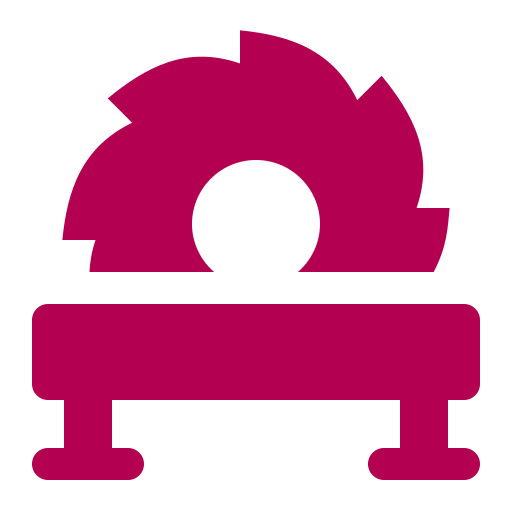Veuillez trouver les versions françaises ci-dessous:
- Analyse Risque Légalité (Risk Assessment)
- Guide Actions Atténuation (Risk Mitigation Guide)
- Guide documentaire (Document Guide)
- Liste législation en vigueur (List of Applicable Legislation)
Timber Risk Score: 0 / 100 in 2021. The Timber Legality Risk Assessment contains an evaluation of the risk of illegality in Cameroon for 6 categories and 26 sub-categories of law. Relevant for the legality of harvesting, and related trade and transport of timber in Cameroon we evaluated 5 categories and 21 indicators. We found:
- Specified risk for 18 sub-categories
- No legal requirements for 4 sub-categories
For wood processing, we evaluated 1 category and 5 indicators. We found:
- Specified risk for 3 sub-categories.
- Low risk for 1 sub-category.
- No legal requirements for 1 sub-category.
This page provides an overview of the legality risks related to timber produced in Cameroon.
Cameroon's forests cover a significant portion of the Congo Basin. Their surface area amounts to about 20 million hectares, or 42% of the national territory (FAO, 2020). They consist of dense rainforests in which logging is practiced, and mangroves that are little or not exploited (FRMI, 2018).
Since 1990, Cameroon’s forest sector has increased its logging activities, which now contributes around 6% of its GDP. Today, Cameroon’s legal timber production has reached approximately 3 million m3. As a result, Cameroon has become the leading exporter of timber products in Africa.
Cameroon has one of the highest rates of forest cover degradation in the Congo Basin, and its forest cover decreased by about 1% per year between 1990 and 2015 (FAO, 2015).
The very high agricultural pressure contributes largely to deforestation. This is compounded by fuelwood collection, mining, and illegal logging (ETTF, 2016).
Illegal logging continues to be a major concern in the country and is frequently documented at various stages along the local supply chain. The risks are wide-ranging and appear across all categories of law. If you are sourcing timber from Cameroon you should take care to ensure the extensive risks identified are not present in your supply chains, or have been sufficiently mitigated.
Log export ban: on more than 20 species of raw logs.
There are currently no armed conflicts in Cameroon according to the Council on Foreign Relations' Global Conflict Tracker.
According to the Uppsala Conflict Data Program there were 3170 deaths from 2010-2017.
VPA status: Implementing
CITES appendix II: Dalbergia spp.,Guibourtia demeusei, G. pellegriniana, G. tessmannii, Pericopsis elata, Prunus africana, Pterocarpus erinaceus
FSC Certified Forest Area: 341,708 hectares (1 December 2021)
Information Gathering
Timber sources
- Find out the different sources of legal timber
- Determine which source type your timber comes from
| Timber source type | Description of source type |
|---|---|
| PERMANENT FOREST DOMAIN | |
|
State (production) Forests |
Forests that fall within the State’s private property by way of a classification procedure. |
|
Council forests |
Council forests are forests incorporated into the private property of councils (local authorities) through a classification procedure. Timber in these forests can be harvested under various different types of permits |
| NON-PERMANENT FOREST DOMAIN | |
|
Community Forests |
Management of community forests is allocated by the state to a local community for a duration of 25 years through a management agreement. Timber in these forests can be harvested under various different types of permits. |
|
Private forests |
Private forests are those planted on a plot of land belonging to a person under private law. |
|
National forests (all other forest areas) |
Natural trees in all other areas (other than forests classified in the permanent domain, community forests and private forests) belong to the State, the exploitation of which the state may therefore assign to other parties. They are not managed forest areas. However, local communities with user rights have a right of pre-emption, by which they may request that the area concerned be allocated as a community forest instead. Private landowners also have a right of pre-emption over natural trees located on their land. If there are no rights of pre-emption, the state may allocate logging titles over the forest resources, notably sales of standing timber (vente de coupe permits in French) for 3-year periods. Other types of permits and licenses may be issued within the national forest domain. |
Risk Assessment
Risk assessment summary
|
Legal rights to harvest
|
|
Taxes and fees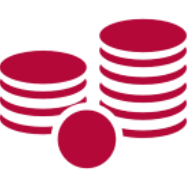 |
|
|
Timber harvesting activities |
|
|
Third parties' rights
|
|
|
Trade and transport |
|
|
Processing
|
|
Risk Mitigation
Mitigate the risks in your supply chain
Learn which actions we recommended to mitigate the risks associated with the timber sourced from Cameroon.
We have two tools to help you mitigate risks for Cameroon timber supply chains:
- the Risk Mitigation Guide gives you a detailed overview of risks in Cameroon, and how to mitigate them. You can find the Risk Mitigation Guide in french here.
- the Document Guide provides you with a list of all required documents and examples of key documents and how to use them in mitigating risks.
The tools above give you the most information. Below is a summary of our five recommended actions to mitigate the risks associated with timber sourced from Cameroon that are not third-party certified.
Source Certified Materials
NEPCon believes that third-party certification (for example FSC and PEFC certification) can provide strong assurances of the legality of the products they cover. Companies seeking to mitigate the risks of sourcing illegal timber should seek to purchase third party certified materials wherever possible.
While the European Timber Regulation does not include an automatic “green lane” for certified products, it does recognize the value of certification as a tool for risk assessment and mitigation. The European Commission says that companies “may rate credibly certified products as having the negligible risk of being illegal, i.e. suitable for placing on the market with no further risk mitigation measures, provided that the rest of the information gathered and the replies to the risk assessment questions do not contradict such a conclusion.”
For more information on using certified materials in your due diligence, including how to assess whether a certification system meets EUTR requirements, see the page on Certification and Due Diligence.
Mitigation recommendations
There are five recommended actions to mitigate the risks associated with the timber sources from Cameroon:
Fully map your supply chain
- Our supply chain mapping tool can help you do this.
2. Obtain and verify documents
3. Consult with stakeholders
4. Carry out on-site verification
5. Conduct targeted timber testing
